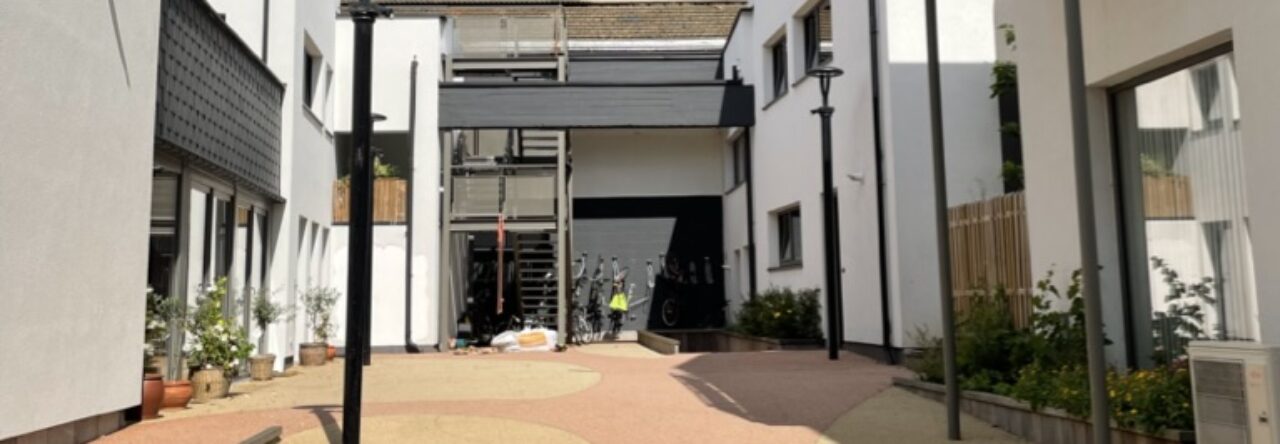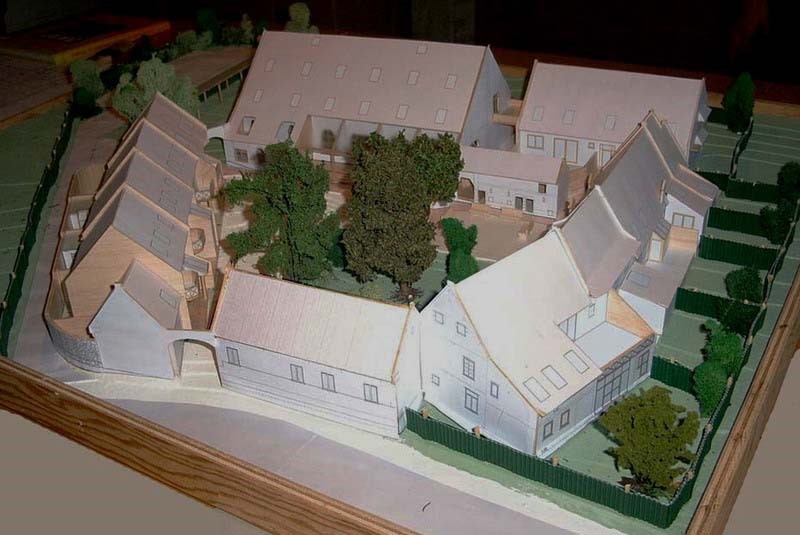L’avenir peut-être…
Wayne Adams and Catherine King, two artists living in Tofino, Canada, couldn’t afford to buy a house of their own. Instead, they took their assets offshore–literally–and created a floating paradise off the coast of Vancouver Island called Freedom Cove.
For over 20 years, they’ve been living off-grid on a brightly-colored collection of buildings and rafts. Weighing in at 500 tons, the complex is complete with five greenhouses, a two-story house, a dance floor, and a lighthouse.
The couple rely on solar energy and rainwater to meet most of their needs. They even raised two kids here. The closest town is an hour’s boat ride away– but if it’s too cold to go outside, they can open up a door in their living room floor and catch fish from the couch.
SeassteadingUtopian Ambitions
Adams and King’s home may not look very futuristic, but they’re pioneering a new form of habitat called seasteadinng. The word seasteading generally refers to permanent human habitats on the ocean, particularly those in international waters.
The most advanced project is the Floating City being developed by the Seasteading Institute. After years of setting their sights on international waters, the group has shifted its focus to working with the government of French Polynesia to support the project. Building a seastead closer to the coast would be easier both in terms of weather conditions and the legality of the project.
The Institute has invested in architectural renderings and feasibility studies to learn what kind of seasteading community would be possible, and they believe that a city at sea could be ready for development by 2020. A survey of people who are interested in living at sea showed some surprising results: people from over 60 countries expressed an interested in living in the Floating City. And a third of the respondents were college-aged millennials who liked the idea of pioneering a new form of living–as long as there would be decent medical care and reliable Internet at sea.
Experiments In Sustainability
Seasteading will be expensive at first, but it may soon become a necessity. As urban populations continue to grow, coastal cities may have no choice but to expand outward. Some nations are already working on plans to keep their cities functioning in the age of climate change.
In the Netherlands, development firm DeltaSync has created floating pavilions that are on display on the harbor in Rotterdam. They show how cities could repurpose river ports with floating, movable neighborhoods connected by energy-efficient podboats. And MIT is working with Amsterdam to develop « Roboats »–self-driving pontoon boats that can also measure sea levels and water quality.
Cities in need of more agricultural land could make use of the solar-powered greenhouses being developed by groups like Smart Floating Farms of Barcelona. These « vertical farms » integrate hydroponics systems with fish hatcheries, allowing for year-round farming on off-shore platforms.
It may be a while before anyone raises a flag on a man-made island in the Great Pacific Garbage Patch. But seasteading projects are happening already, and it’s time that we recognized their importance –both as scientific and as social laboratories.

